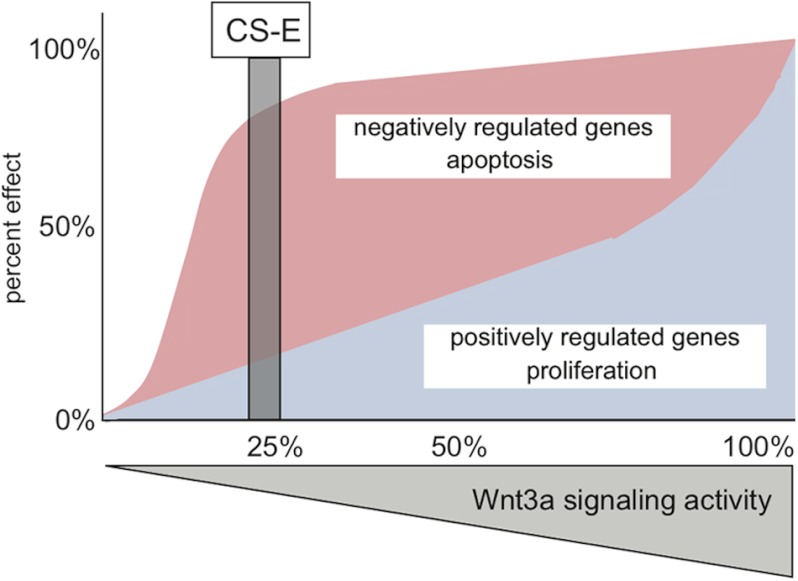FIGURE 9.
Model of selective interference with Wnt3a transcriptional programs and biological outcomes through differential Wnt3a signaling thresholds. Transcriptional programs negatively regulated by Wnt3a signaling are repressed at low levels of Wnt3a signaling activity (red response curve). As repressed transcriptional programs include pro-apoptotic genes, Wnt3a can also interfere with serum starvation-induced apoptosis at these low signaling levels. In contrast, transcriptional programs positively regulated by Wnt3a require high levels of Wnt3a signaling activity for efficient induction (blue response curve). As induced transcriptional programs include positive regulators of proliferation, the maximal effects of Wnt3a on proliferation require high signaling levels. Treatment with CS-E reduced Wnt3a signaling activity to a threshold level of ∼25%, which elicited a differential response of molecular and biological outcomes of Wnt3a signaling; positively regulated target genes and proliferation cannot be efficiently induced, whereas negatively regulated target genes and apoptosis are efficiently repressed.

